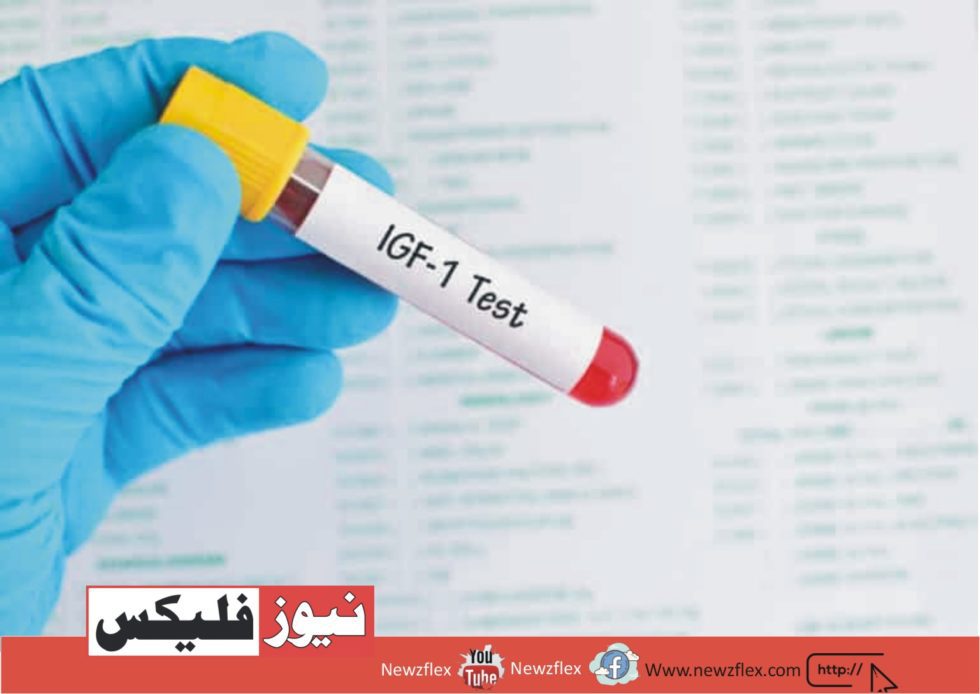
Metabolic Syndrome and IGF-1 Research Studies
This article will cover the characteristics of insulin-like growth factor 1 (IGF-1), its role in the body, and the potential effects of IGF-1 deficiency. Even a slight interruption in the coordinating pathway increases the risk of additional health issues and may hinder growth.
What is the IGF-1 peptide?
There are seventy amino acids in somatomedin C, also known as insulin-like growth factor 1 [i]. Proinsulin and the polypeptide hormone IGF-2 are structurally similar. IGF-1 is made up of polypeptide chains joined by disulfide bonds.
The liver is thought to be its principal site of synthesis [ii], and GH seems to promote its synthesis. It’s also important to note that some tissues spontaneously manufacture it.
The central IGF-1 receptor is insulin growth factor-binding protein (IGF-BP). IGF-1’s bloodstream activity duration appears to be significantly extended by the following binding. It is thought that adolescence is when insulin-like growth factor 1 production peaks.
What function does the IGF-1 peptide serve?
Let’s examine the literature on the causes of IGF-1 released by the liver. Growth hormone-releasing hormone (GHRH) is thought to increase the synthesis of growth hormone (GH). GH may enter the liver through the vascular system and stimulate the synthesis of insulin-like growth factor 1 (IGF-1). IGF-1, or insulin-like growth factor 1, is also produced in several peripheral body tissues.
According to research, elevated IGF-1 levels may trigger a negative feedback loop in which the pituitary secretes more somatostatin, preventing the release of further growth hormone (GH) [iii].
Recent research indicates that insulin-like growth factor 1 (IGF-1) may efficiently regulate GH levels.
Results suggest that IGF-1 may bind to both the insulin receptor and the IGF-1R, which are tyrosine kinases on the surface of cells, because of structural similarities.
According to researchers, it may have some ability to detect the presence of nutrients. The activation of the PI3K and Mitogen-Activated Protein (MAP) Kinase signalling pathways may signal cells to undergo cell development [iv]. Furthermore, IGF-1 may keep its cells from passing through an early stage of apoptosis.
Research indicates that IGF-1 may improve fat utilization, increase cellular protein synthesis, and improve glucose metabolism—all of which have apparent metabolic implications in addition to IGF-1’s suggested close association with growth hormone (GH).
Importantly, research indicates that IGF-1 may potentially be used as a diagnostic tool to measure growth hormone levels. An increase in IGF-1 is linked to normal growth hormone (GH) production.
The results of the IGF-1 peptide research reveal that IGF-1 may stimulate cell division, which may have systemic effects such as encouraging bone formation, increasing lean muscle mass, and strengthening cartilage and ligaments.
IGF-1 is thought to have various effects, but one that sticks out is the hyperplasia it may cause in muscle cells.
Insulin-like growth factor 1 (IGF-1) is the subject of growing conjecture as a potential enhancer of energy, endurance, and cellular recovery following physical exertion. Additionally, it shows some promise for tissue healing.
Scientists speculate that fat may be broken down into energy due to the higher metabolic rate that IGF-1 generates, leading to less fat being stored and more weight loss.
According to studies, IGF-1 may favourably impact how well the nervous system and cognitive capacities work.
Peptide IGF-1 and Aging
IGF-1 may help prolong life and have anti-ageing characteristics, according to growing conjecture [v], [vi]. According to research, the growth hormone/IGF-1/insulin signalling pathway is downregulated, significantly delaying the onset of ageing. Studies using altered mouse models indicate that it might have an antioxidant effect, although the precise pharmacology is unknown.
The Peptide IGF-1 and Cancer
Because studies indicate that IGF-1 may promote mitogenesis or cell proliferation and inhibit apoptosis by binding to IGF-1R, higher IGF-1 levels have been associated with the development of primary malignancies. Prostate, colorectal, and breast cancer patients all exhibited higher IGF-1 levels [vii].
As a result, scientists can conclude that a higher IGF-1 level could potentially raise the risk of developing specific primary cancers.
Insulin-like Peptides and Metabolic Disorders
Before discussing IGF-1’s effect on metabolic syndrome, describe the disorder.
The metabolic syndrome is typified by hypertension, type 2 diabetes, stroke, and other cardiovascular issues.
According to research, IGF-1 may bind to IGF-1R more strongly than insulin due to its structural resemblance to insulin. This could make it a viable treatment for diabetes symptoms and a way to reduce insulin resistance.
Additionally, some findings suggest that IGF-1 may have a preventive impact against cardiovascular disease [viii]. The outcome could be the maintenance or improvement of cardiovascular health. Additionally, being overweight may become less common when fat accumulation decreases, since research indicates that IGF-1 may encourage fat breakdown.
Visit the Core Peptides website to purchase the best research substances available.
Citations [i] Laron Z. Growth hormone: insulin-like growth factor 1 (IGF-1). Oct. 2001;54(5):311-6; doi: 10.1136/mp.54.5.311. Mol Pathol. PMCID: PMC1187088; PMID: 11577173.
[ii] Dattani MT, Peters CJ. How to take advantage of IGF1, or insulin-like growth factor 1. 2012 June;97(3):114–8. doi: 10.1136/archdischild-2011-300265. Arch Dis Child Educ Pract Ed. PMID: 22267103; Epub 2012 Jan 20.
[iii] Insulin-like growth factor-1 insufficiency and metabolic syndrome: Aguirre GA, De Ita JR, de la Garza RG, Castilla-Cortazar I. J Transl Med. 2016 Jan 6;14:3. PMID: 26733412; PMCID: PMC4702316. doi: 10.1186/s12967-015-0762-z.
[iv] Tropea D, Arafa D, and Wrigley S. At the Intersection of Aging and Brain Development: Insulin-Like Growth Factor 1. PMID: 28203146; PMCID: PMC5285390. Front Cell Neurosci. 2017 Feb 1;11:14. Doi: 10.3389/fncel.2017.00014.
[v] Bartke A, Steger R, Kopchick JJ, Dominici F, Turyn D, Kinney B, and Chandrashekar V. New understandings and debates surrounding ageing and insulin-like growth factor 1 (IGF-1). PMID: 12652183; Biogerontology. 2003;4(1):1–8. doi: 10.1023/a:1022448532248.
[vi] Hofland LJ, Vollery M, Vitale G, Pellegrino G. Role of the IGF-1 System in the Modulation of Longevity: Controversies and New Insights From a Centenarians’ Perspective. Louisanne’s Front Endocrinol. doi: 10.3389/fendo.2019.00027. 2019 Feb 1;10:27. PMCID: PMC6367275; PMID: 30774624.
[vii] Bosco C., Van Hemelrijck M., Ridley AJ, Shanmugalingam T. Does IGF-1 play a part in the emergence of secondary primary cancers? 10.1002/cam4.871. Cancer Med. 2016 Nov;5(11):3353-3367. PMID: 27734632; PMCID: PMC5119990. Epub 2016 Oct 13.
[viii] Vafa M., Asghari Hanjani N., The Function of IGF-1 in Cancer, Heart Disease, and Obesity. Iran Med J Islam Repub. doi: 10.34171/mjiri.33.56. 2019 June 17; 33:56. PMCID: PMC6708115; PMID: 31456980.








